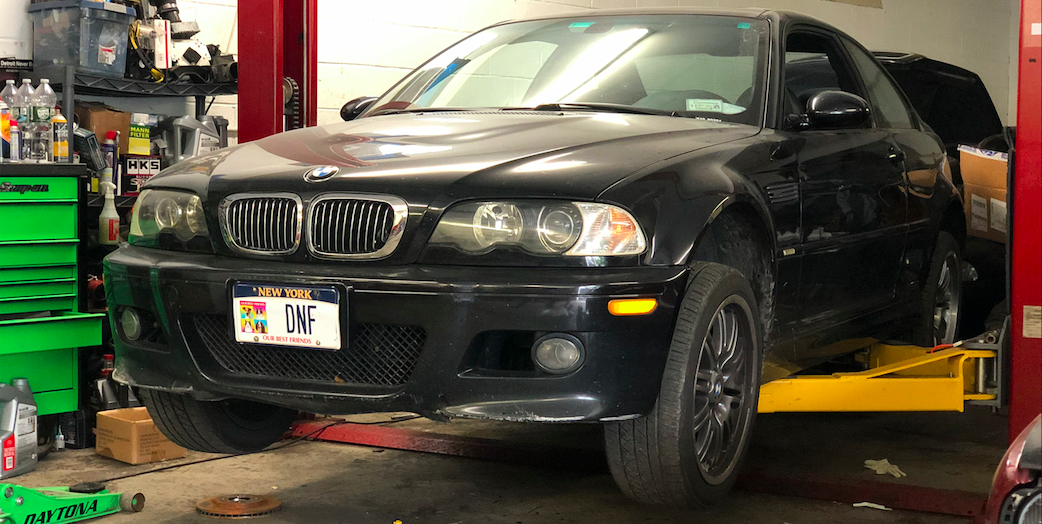Somehow My 284,000-Mile BMW M3’s Engine Is the Healthiest Part of the Car

This summer I bought an E46-generation BMW M3 with a staggering 284,761 miles on the clock. On the surface it seemed like a clean car considering the mileage, but after a few hundred miles, it was clear some serious work needed to be done. Thankfully, the most expensive part of the car, the engine, seems perfectly healthy.
How Do You Know?

Aside from sounding good and pulling to redline without issue, the 3.2-liter S54 straight-six under the hood of this M3 still feels like it’s making roughly the same 332 hp it did from the factory more than a decade ago. It doesn’t burn oil or suffer any weird clattering noises.
Just to be sure, I sent an oil sample to Illinois firm Blackstone Laboratories for analysis. While oil analyses can’t tell you everything, they can help determine how much wear the inside of your engine has experienced since the last oil change. Here’s what Blackstone had to say about my S54:
BRIAN: You presumed this to be 10W/60 oil and the 15.52 cSt viscosity fits that grade. These are good results on the whole, with just a couple items to check back on. Most of the wear metals match up with universal averages, based on ~4,400-mile oil runs. Lead—from bearings—is actually quite a bit below average, which is nice to see. Copper on the other hand is elevated. It may be from accelerated wear at bronze parts, or simply wear-in left from a recent repair. Trends will tell us more on that if all is well on your end.
All pretty surprising given BMW’s reputation for reliability (or lack thereof). The only thing I’ve found on the outside so far is a weakening rear main seal. It’s not too bad, but still worth keeping an eye on as I continue to drive the car.
So What Are You Doing to Keep It Running Strong?
I ordered a maintenance service kit specific to my car from FCP Euro which, in addition to an oil change kit, comes with new spark plugs, an air intake filter, and a fuel filter—all standard stuff that should be replaced periodically to keep an engine running healthy.
Most of the new parts went in without issue, though some of the spark plugs that came with the car were way over-torqued into the head. Thankfully none of them seemed to have done any damage to the threads, as the new plugs went in easily.
Whoever replaced the air filter before me dropped in one of K&N’s reusable units, which is neat. It might be the first car I’ve ever seen equipped with a K&N filter that didn’t have one of those obnoxious stickers placed on the airbox. I put the new OEM filter in its place regardless since I didn’t want it to go to waste. I’ll clean the K&N unit and reuse it once the OEM filter needs to be replaced.
With all of these basic maintenance items addressed, I shouldn’t have to worry too much about the engine’s health going forward... so long as it’s actually running, that is.
What Else Have You Done So Far?
The driver-side taillight housing acted up on my drive home to the point where the left-side blinker stopped altogether. I tried replacing the bulb in an attempt to fix the problem, but it was the bulb housing itself that caused the issue. So I just bought a new housing from FCP Euro, which came with new turn-signal and brake bulbs. I popped them in and the problem was resolved.
All four of the tires were below their recommended psi when I first checked them, with three out of four hovering around the 25 psi (they should be at somewhere between 30-35). The fourth tire, the passenger-side rear, was all the way down at 10 psi. I refilled all of them and the car feels much less like I’m driving on sand. I haven’t figured out what sort of tires I’m going to put on this car just yet, so I’ll just continue to monitor psi and refill as needed.
So What’s Next?
There are a bunch of small items that I’d like to fix to make this M3 more usable as a daily driver. The license plate lights aren’t functional, and they need to work in order for the car to pass inspection, so I’ll be addressing that first. There’s also the DSC and ABS lights on the dash, which I have to diagnose. Smaller things like the headlight leveling sensor and ambient air temperature sensor also need replacing.
Bigger stuff, like the front brakes, steering play, suspension bushings, and probable subframe cracking I mentioned in the previous article, will come a bit later. Stay tuned.
You Might Also Like

 Yahoo Movies
Yahoo Movies 
